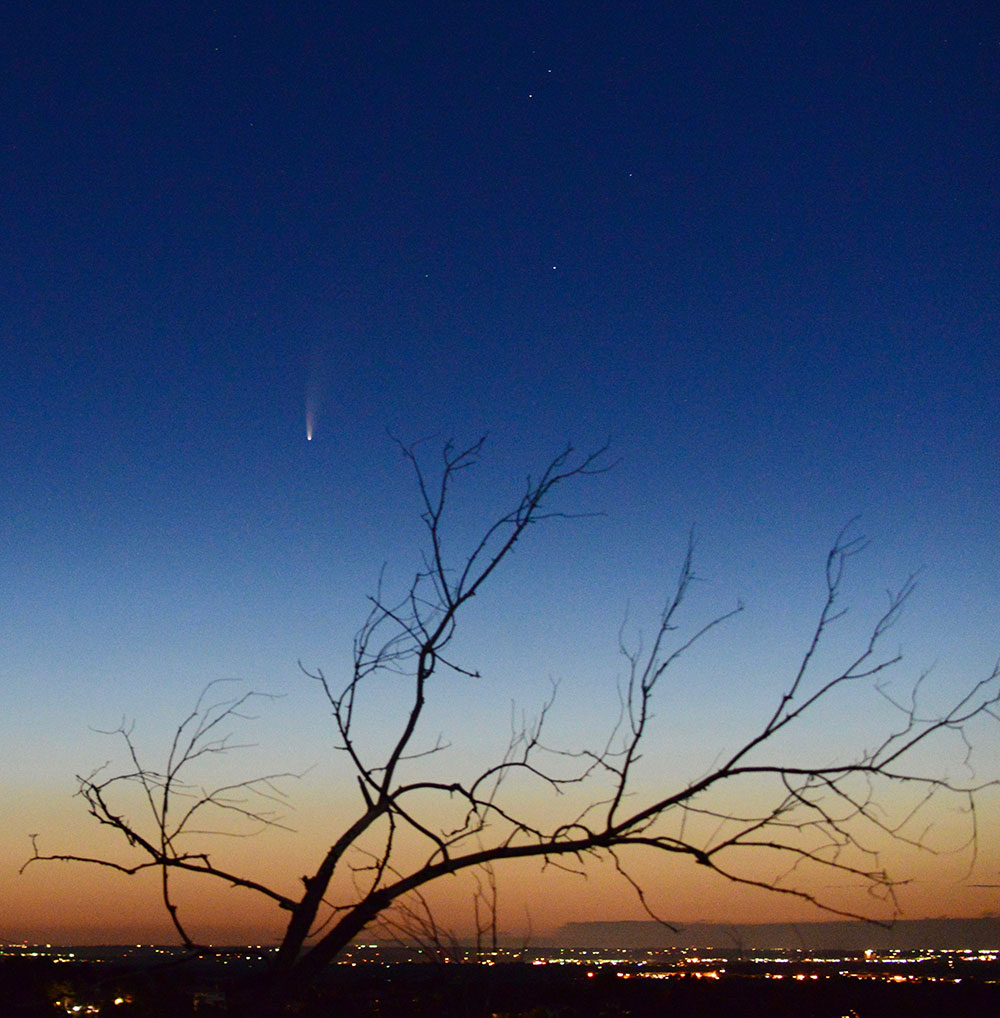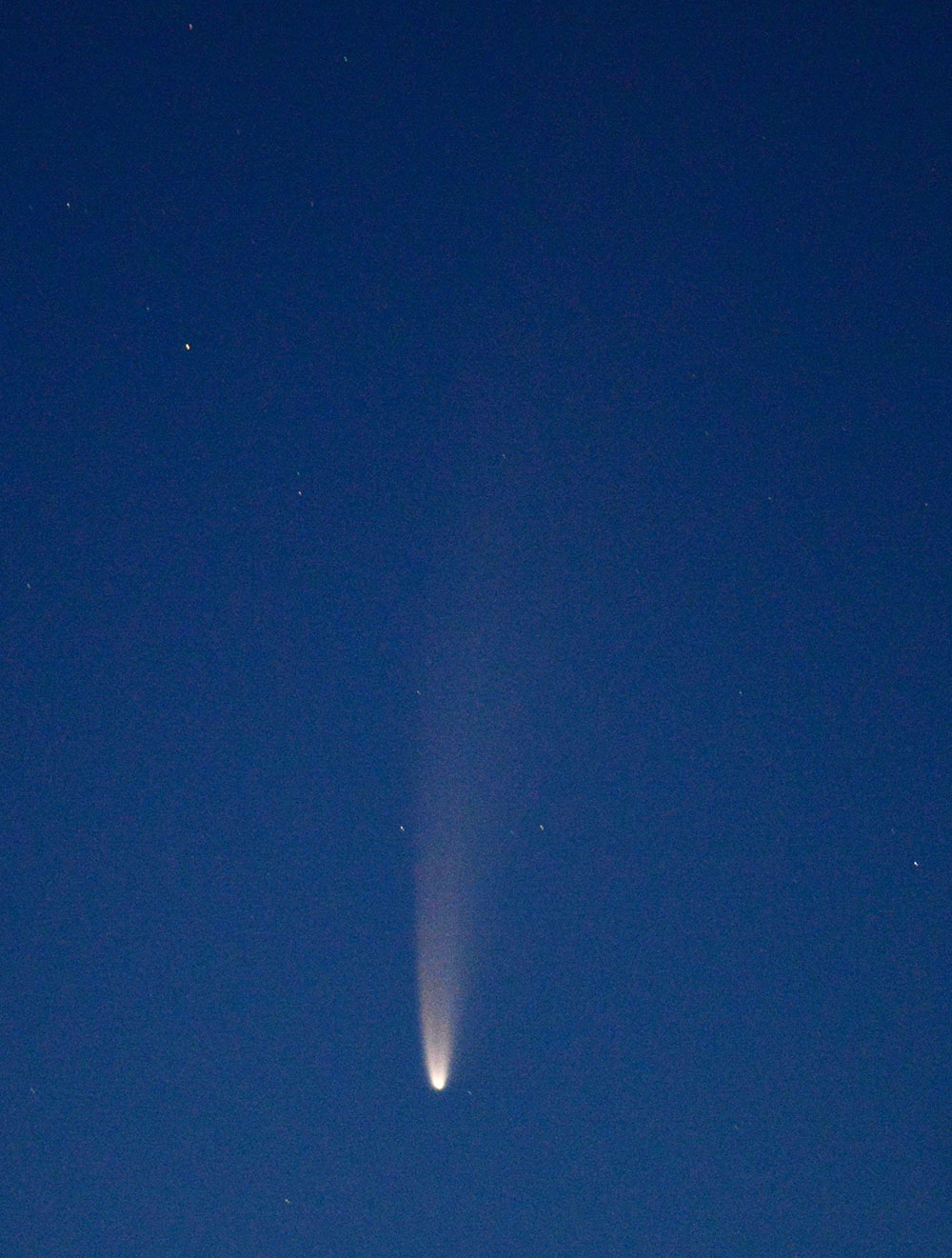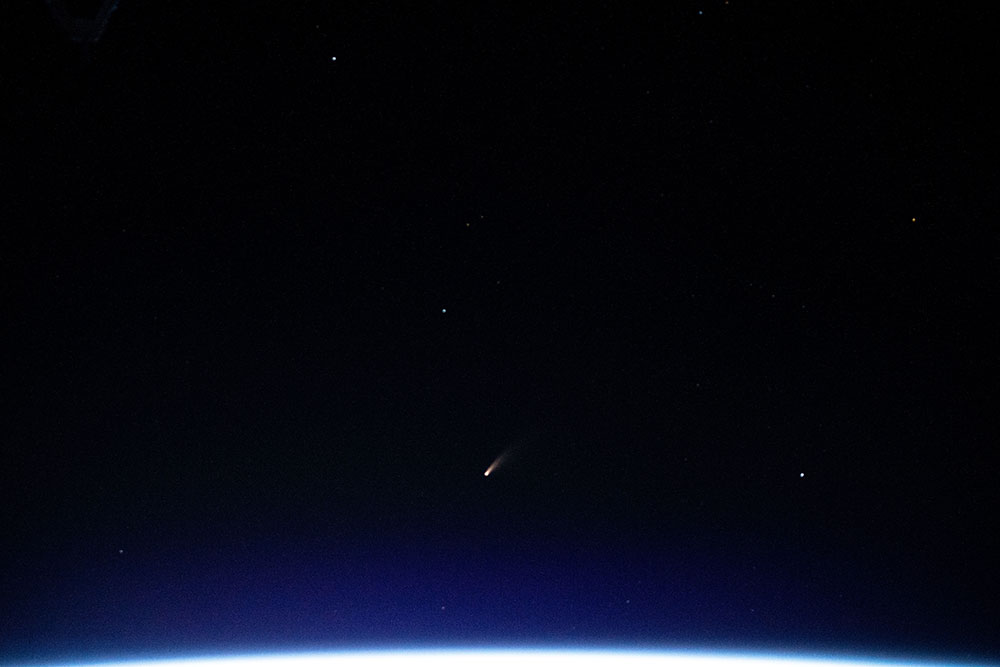Dear Friends —
As you may have heard, there is a comet currently visible for most people in the Northern Hemisphere. It’s worth going out to see, as the attached photos show. Here is a brief Q&A to help you see it and understand what you are seeing.
Q: How can I see Comet NEOWISE?
A: Right now through July 14, you’ll want to go out about 2 hours before dawn; after July 14, it should hopefully become visible in the evening sky. This article from Sky & Telescope gives a quick summary of exactly when and where to look for the comet both now and after July 14.
Q: Do I need any equipment?
A: No, but binoculars would be useful. The comet is currently visible to the naked eye, but fairly dim so you’ll need to look in the right spot. Binoculars or a small telescope will give you a much better view. If you want to take a photo, it’s best to use an SLR with a tripod; most phone cameras won’t be able to capture it.
Q: Do I have to drive somewhere or can I see it from home?
A: You might be able to see it from home, if you have a clear view toward the horizon (northeast for pre-dawn viewing before July 14, northwest for evening viewing after) and a reasonably dark sky. Otherwise, take a drive to get to a location with a clear horizon.
Q: What exactly is a comet?
A: A comet is essentially a ball of ice mixed with rock and dust that orbits the Sun. Most comets are located in the distant outskirts of our solar system, where they remain perpetually dark and frozen. However, on occasion, another object may disturb a comet’s orbit, changing the orbit to one that brings it close to the Sun. In these rare cases, the comet may become visible in our night sky as the heat of the Sun causes ice to vaporize. The escaping gas, along with dust that it drags along, can form a huge, roughly spherical “coma” around the central “nucleus” of the comet, and sunlight and the solar wind can push some of this material into a long tail. (For that reason, the tail always points away from the Sun). In fact, comets get their names from this appearance, since the word comet comes from the Greek word for “hair” (notice the similarity between the words comet and comb). For more on how comets fit into the general layout of the solar system, see this page from my free, online 8th grade curriculum.
Q: Why is it called “NEOWISE”?
A: Comets are named for their discoverers, and in this case the comet was discovered in images taken by a NASA spacecraft that was initially called the Wide-field Infrared Survey Explorer (WISE). WISE was later repurposed to search for “near-Earth objects” (NEOs), which are asteroids with orbits that come near Earth, hence the name NEOWISE.
Q: What’s the difference between a comet and a meteor?
A: People often confuse the two, but comets and meteors are quite different:
- A meteor is a flash of light in our own atmosphere, created as a piece of space dust burns up. Hence, meteors are visible for only a few seconds as they dart across the sky.
- Comets are in space, orbiting the Sun. This means that even the ones that come close enough for us to see are still typically tens to hundreds of millions of kilometers from Earth. As a result, their motion relative to the stars is fairly slow, so that on a single night, you may not notice this motion at all; the comet will simply rise and set with the stars. In other words, even though comet photos (like the ones below) may make it look like they are racing across the sky, they aren’t; you’ll simply see a comet with its long tail sitting in one spot among the stars in the sky.
- Note: Despite these differences, there is a deep connection between comets and meteors: Most of the dust particles that enter our atmosphere to become meteors were actually shed by comets. That is, meteors are created by comet dust, and therefore we tend to get more of them — a meteor shower — at times of year when our orbit crosses the orbit of a comet that has shed lots of dust.
Q: Speaking of meteor showers, when can I see one?
A: There are several good meteor showers each year, but the next will be the annual Perseid meteor shower from August 11-13; see this article for info on how best to watch it.
Q: Any other big space events this month?
A: Yes! Three spacecraft are scheduled to launch for Mars this month, including NASA’s Perseverance rover, with launch currently planned for July 30. The other two missions are the United Arab Emirate’s Hope Mars mission, much of which was built at the University of Colorado (Boulder), scheduled to launch on July 14; and China’s Tianwen-1 mission, which includes an orbiter and a rover, scheduled to launch on July 23.
Q: Have you finalized your donation plans described in your last email?
A: Yes: In support of equal justice and Black Lives Matter, I will be donating 100% of 2020 proceeds for my 6 children’s books to the National Urban League to support programs for the education and empowerment of black youth. You can find links for ordering books here.
All for now except for photos below. Happy observing!
Jeff
These first two photos were taken by George Kiladis, a neighbor and NOAA scientist here in Boulder.


This photo shows the comet as seen from the International Space Station

